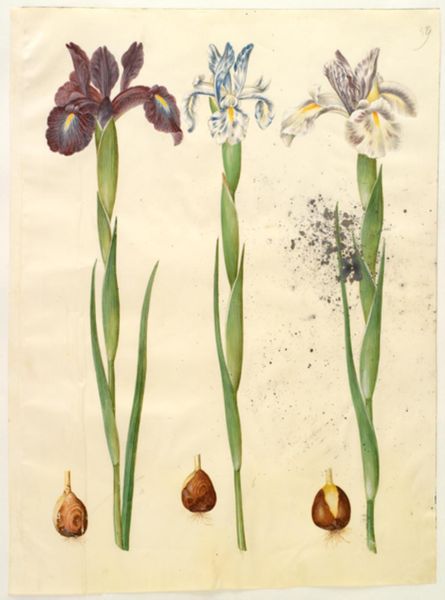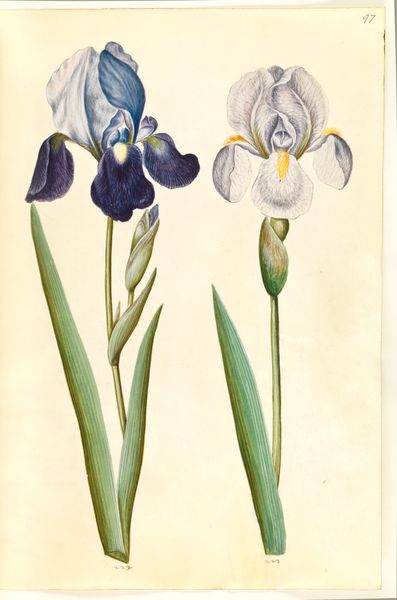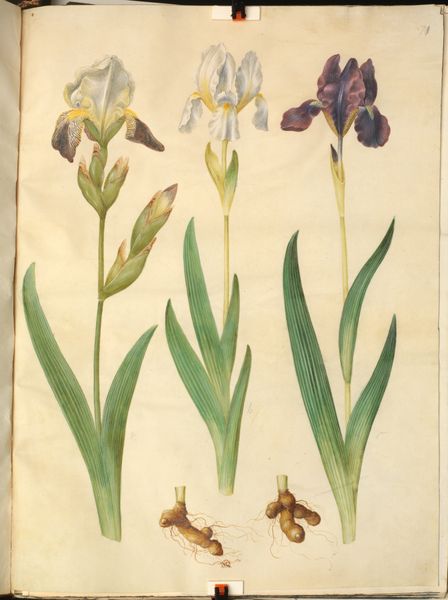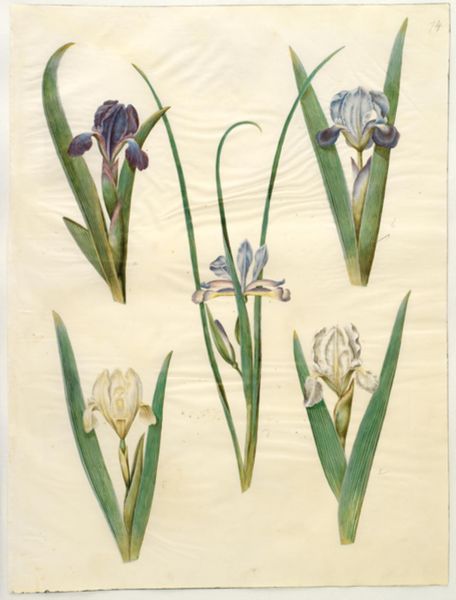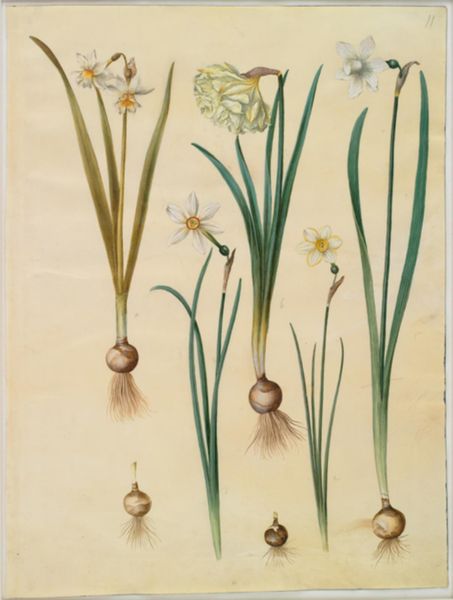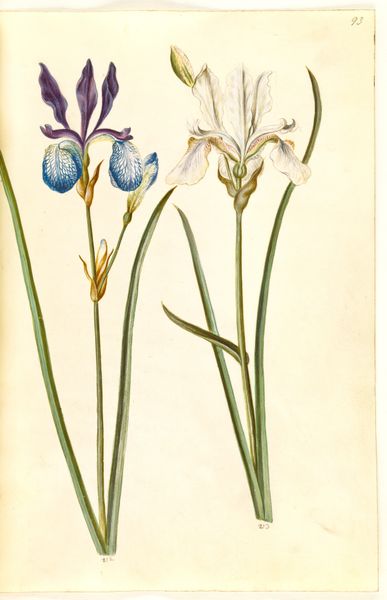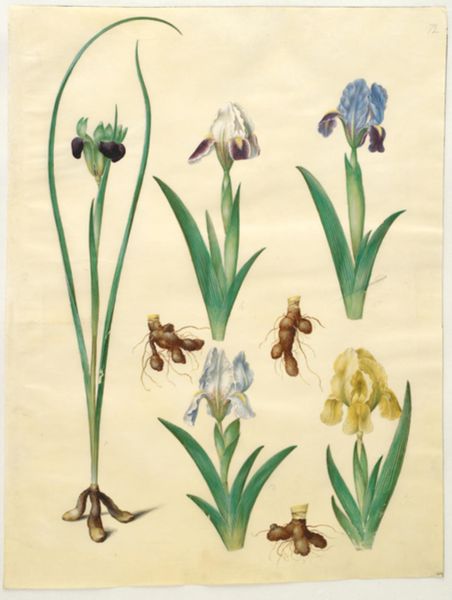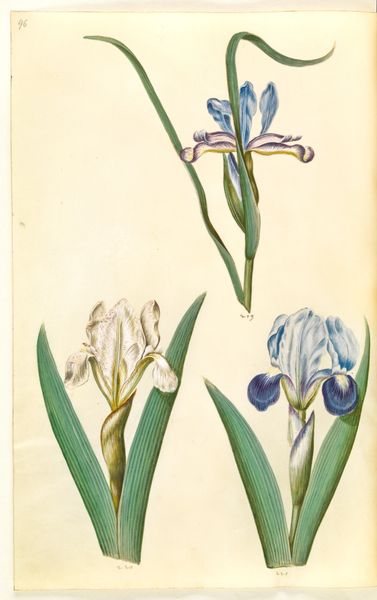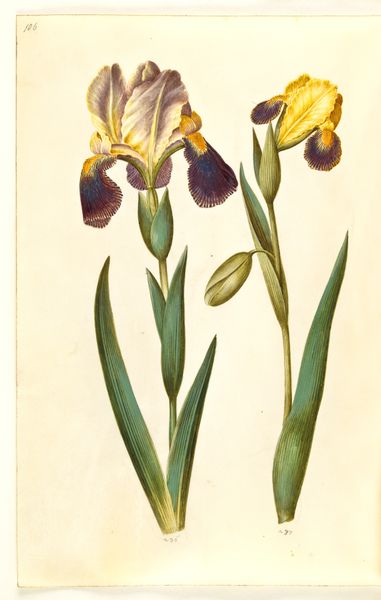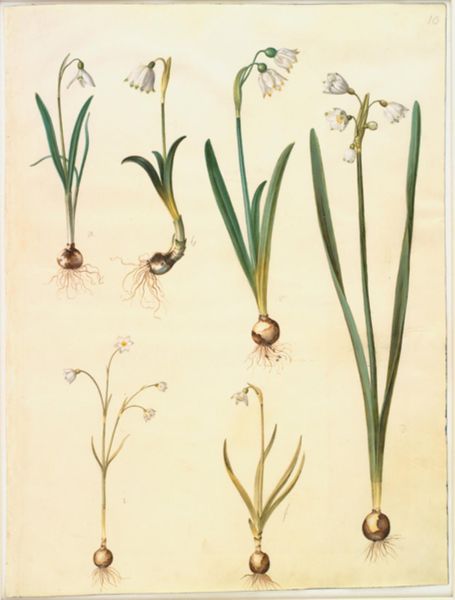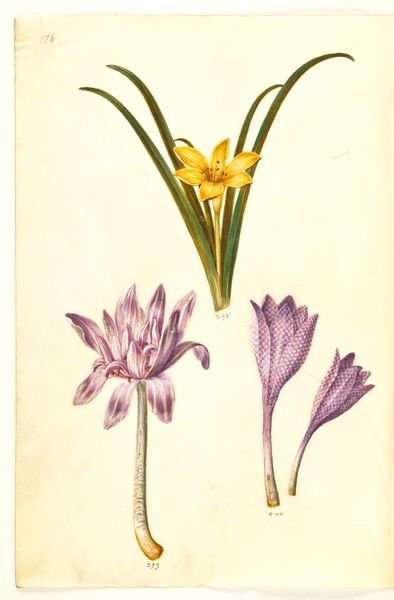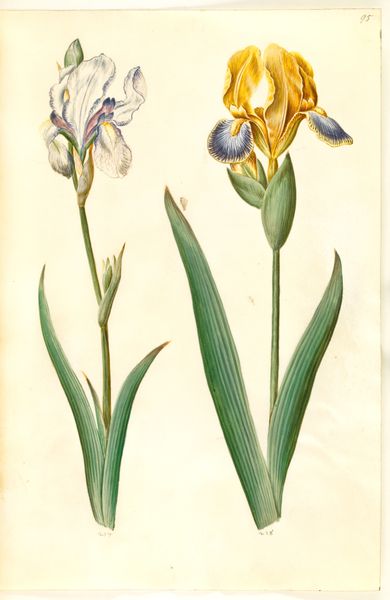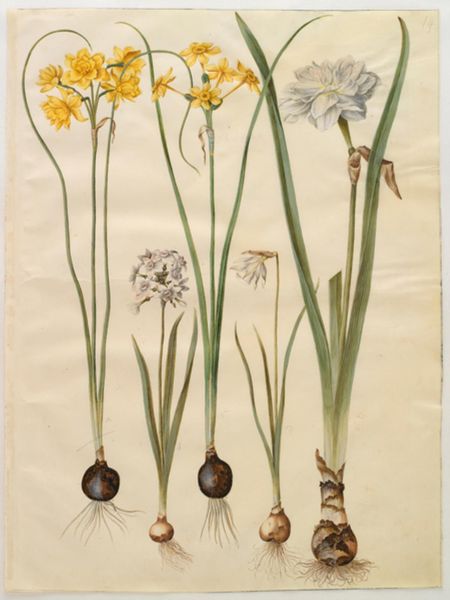
Iris susiana (sørge-iris); Iris ×florentina (violrod) 1649 - 1659
0:00
0:00
drawing, painting, gouache, watercolor
#
drawing
#
dutch-golden-age
#
painting
#
gouache
#
watercolor
#
watercolour illustration
#
northern-renaissance
#
watercolor
Dimensions: 505 mm (height) x 385 mm (width) (bladmaal)
Curator: This is "Iris susiana (sørge-iris); Iris ×florentina (violrod)", created between 1649 and 1659 by Hans Simon Holtzbecker. The medium is a combination of watercolor and gouache on drawing. Editor: The immediate contrast grabs you, doesn’t it? Such stark opposition—a somber, almost bruised purple iris alongside one of pristine white. The artist captured a beautiful contrast. Curator: It's a particularly interesting piece because Holtzbecker was deeply involved in the court of Frederik III in Copenhagen. The iris became a coveted motif, signaling the owner’s sophisticated grasp of botanical knowledge. It represents both aesthetic appeal and social standing. Editor: That contrast speaks volumes! In its original time, purple dye was very hard to find so the inclusion of the Iris could be the signaling the importance of its commissioners to broader intersectional narratives relating to privilege. It brings to mind the careful staging of the natural world in the service of power. How interesting to consider class via petals! Curator: Precisely. What Holtzbecker achieved so masterfully was integrating symbolism and scientific accuracy within a decorative idiom so prized at the time. Botanical art wasn’t simply illustrative; it projected specific meanings tied to its patron's values and intellectual pursuits. Editor: But the delicacy of watercolor adds such nuance. You see the veins in the petals, the slight imperfections…it reminds us that even symbols of power are still fragile, temporal. And beyond power dynamics, these portraits of irises represent an attempt to hold beauty, to study and possess nature, even if just on paper. Curator: That’s a brilliant point! And seeing it here, at the Statens Museum for Kunst, is proof of how those attempts evolve and how this rendering also has acquired different meaning, through changing audiences and expectations of art. Editor: Yes, considering its journey—from courtly display to museum piece—broadens the questions it poses. It becomes a meditation on power, representation, and our complex relationship with the natural world. Curator: Thank you, you’ve really opened up a fresh dimension of understanding for me! Editor: My pleasure. I will definitely be on the lookout for it to deepen that very needed intersectional exploration into that time's expression.
Comments
No comments
Be the first to comment and join the conversation on the ultimate creative platform.
